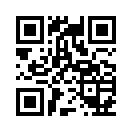Why use IEM (in-ear monitoring)?
Why use IEM (in-ear monitoring)?
I believe that when you watch the concert, you will find some musicians / singers wearing earpieces (sometimes they will adjust or remove the earpieces). Let's share the secret of this type of headset today!

The earpiece is called "In Ear Monitor" (referred to as IEM). Usually such headphones emphasize clear sound quality, and focus on the recognition and separation of instruments and vocals, and noise isolation from the outside world
For example, if you are a singer with a live band singing, there will be a lot of noise on the stage, especially the drums. You may not hear yourself, which will make you sing louder or even yell. Sooner your voice will become exhausted and you will feel more and more nervous. If you use in-ear monitor, you can tell engineers use your voice only. This way you won't hear drums at all! You can choose what instrument you need to hear.

You must have a question. There is a monitor speaker in front of the performance venue to send out your own instrument or vocal. Why do you need IEM? We sorted out five reasons:
1. Insufficient monitoring of the venue
When you are in some large space, you may need to go to interact with the audience, walk around or dance on the stage. Not every floor has a floor monitor. With IEM, you can hear your voice at any time.

2. Free control and clearer listening
One of the big advantage of IEM is that It can be set up in the studio beforehand. You can decide your monitoring content before the performance. So that you can get used to the IEM in the studio, and the live sound will be the same as what you heard in the studio. You don't have to say "Turn up the guitar"or "turn me up" to the engineer in a live context.
3. Increase the clarity of the sound
Everyone hate the sound feedback. I guess no one likes the intense buzz.
The feedback is due to the amplified sound from the monitor speaker is picked up by the microphone again and re-amplified. If it is cycled, it will produce constant harsh noise.
When the whole band asked the engineers to turn up their volume, the feedback could not be avoided. But if turn down the volume, then musicians are hardlly to hear themselves, and it will also affect the performance.
At this point, IEM can effectively solve this problem: the audio console directly sends the sound to your IEM, and no feedback is generated.

4. Protect hearing
Yes, you are not misreading. In the daily, we are not recommended by wearing earphone frequently. However, in the live performance, the damage of the IEM to the ear will be much smaller than the loud sound of the scene. The sound-insulated IEM effectively blocks sound from over-stressing external sounds. With control, you can adjust the volume to a safe level. It's by far the healthiest option.
5. More advanced way
In modern times, orchestras or singers have begun to introduce Program or Backing Track, which gives songs multi timbre , such as the elements of electro-acoustic, string and other performances . But this requires all musicians to bite very tightly with the metronome, and one shot cannot be missed. Therefore, the sound of the metronome and whole band are usually played in IEM. You know that it is impossible to put the metronome on the monitor speaker . How embarrassing if audience find that !

As the diversity and complexity of music increase, the need for in-ear monitoring is increasing. Headphones are not a completely new invention. However, the original leisure and entertainment-oriented headphones have been transformed into professional in-ear monitoring. This is definitely an innovation in use.
What kind of popular IEM monitor in Sinbosen?
Model SR2050 IEM monitor has two pockets & earphone
Max pair 40sets pockets & earphones
Workable frequency :
572-603.5MHz
606-630MHz
740-776MHz
798-830MHz




